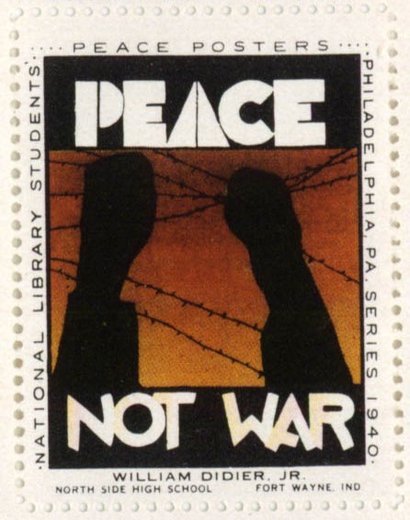1930 Peace Collection

In 1930, Hull House founder and noted peace activist Jane Addams donated her books relating to peace and social justice to Swarthmore. At about the same time, the records of the Women's International League for Peace and Freedom (WILPF), of which Addams was a founder, were deposited at the College. With the later acquisition of Addams' personal and professional papers, President Frank Aydelotte's idea for a peace library began to take shape.
Later, Aydelotte wrote to Ellen Starr Brinton, the Peace Collection's first curator:
"World Peace may not be attained in this generation or the next, but eventually, the nations will find a way to solving their troubles besides fighting it out. Historians of the future will be interested in the work and efforts of individuals and groups who denounced war.
"Let us save the evidence for them to see. ... Let us collect here on the Swarthmore campus peace material of all ages and see if we can preserve it for 100 or 500 years for the use of research students of the future.
"See if you can secure peace material from other countries. Get it in any language, from any source. Get it by the ton if you can."
Brinton, a WILPF member and former foreign affairs journalist, spent much of her time gathering books, documents, and artifacts pertaining to peace from the 17th to 20th centuries. When the spread of fascism in Europe endangered peace activists and their writings, Brinton traveled through England, Scandinavia, Germany, Czechoslovakia, and the Soviet Union to collect historically valuable peace materials and arrange for their transfer to the College. She also worked tirelessly during World War II to rescue pacifist refugees from Europe.
Since its founding, the Peace Collection has gathered and preserved for scholarly research the materials of people and organizations who have worked for nonviolent social change, disarmament, and conflict resolution between peoples and nations. The collection houses material on a wide variety of subjects, such as the history of the peace movement, pacifism, women and peace, conscientious objection, nonviolence and disarmament, internationalism, and civil disobedience. It also contains a large number of posters, photographs, and memorabilia, including the medal Jane Addams received when she became the first American woman to win the Nobel Peace Prize.


